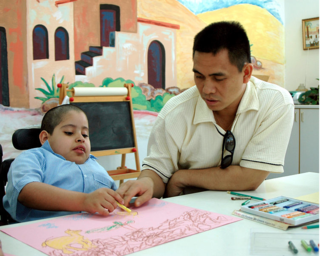
Cognition
How and Why the Arts Support Language Learning and Cognition
A picture is worth a thousand words.
Posted September 26, 2017
When it comes to language learning, an old adage rings true: a picture is worth a thousand words.
There is growing evidence that the arts—be it a picture, drama, song, or dance—may help children with English language learning and related cognitive skills that support learning across many different areas.
This research has also demonstrated that the arts support conventional literacy skills—reading, writing, speaking, and listening—across different learning abilities. Whether it’s an English language learner, a child with a learning disability, or a child who has been in an under-resourced environment, children with many different learning profiles can benefit from the arts, and all students should have access to the arts as a means to authentic literacy learning.
What’s less certain is how or why the arts support language learning.
I have spent more than two decades immersing myself in the concept of arts integration—first as an artist, next as an educator, and after that as a researcher; today all of these roles come together in my work with students and teachers. My research has shown that the arts support a child’s ability to access concepts and information that may otherwise be unavailable to them through conventional language forms.
Multiple entry points
There are a few reasons why this is the case. First, there are multiple ways to express an idea—many of which are not linguistic. By expressing an idea through visual, auditory, kinesthetic and/or tactile sensory information, a child has more ways to map that concept onto language forms.
We’re used to helping teach children words through objects and pictures—A is for Apple, B is for Banana, etc.—but what we give less weight to is the potential for the arts to foster even greater language learning. For example, the use of drama can help students by creating a visual as well as a physical and temporal or time-related representation of a concept, which then enables them to map that concept onto a more abstract representation, such as a form of oral or written language.
A study examining the influence of tableau on the expressive language skills of three fourth-grade students with language-based learning disabilities showed strong positive associations between the dramatic art form of tableau lessons and these students’ linguistic productivity, specificity, and narrative cohesion.
After each lesson, the students were asked to tell the researcher about a story they had just discussed in class. We found that in comparison to the students’ regular English language arts lessons, the use of tableau increased the students’ ability to be specific and precise in their oral retellings of the story.
Scaffolding
Imagine the arts as scaffolding for language learning. The arts don’t necessarily solve or fix a child’s language problems alone; rather, the use of the arts in an instructional context provides a solid structure from which they can learn to map less distinct mental representations, or linguistic forms.

There’s also no form of art that is necessarily more effective than another—it really just depends on the individual learner and the area that they are trying to improve upon. If a teacher wants students to remember or learn vocabulary, one might have the students act it out through tableau, draw it, or use gestures to describe it. Once students understand the vocabulary in a symbolic way, a teacher could then incorporate that vocabulary into a script for a dramatic play, which enables the students to pair up their understanding of the words or phrases with linguistic forms.
In 2014, we examined the influence of classroom drama on third-grade English language learners whose home language was Spanish. We were able to demonstrate that during the lessons that included classroom drama, students were more linguistically productive and specific in English than in conventional English language arts lessons. We also found that both the students and the teacher were more engaged in the classroom drama activities as compared to conventional language arts lessons. This mutual engagement and shared commitment to the learning process is another key reason why leveraging the arts for learning is so effective. Teachers who are more engaged in the learning process with their students tend to elicit greater engagement and better outcomes from their students as a result.
The growing body of research on the topic of arts integration in education makes a strong case for the increased use of the arts in language learning. And at a time where budget deficits are threatening arts funding for schools across the country, this research lends even more weight to the argument that the arts are absolutely necessary for our students’ success.
Dr. Alida Anderson is an Associate Professor in the School of Education at American University.



